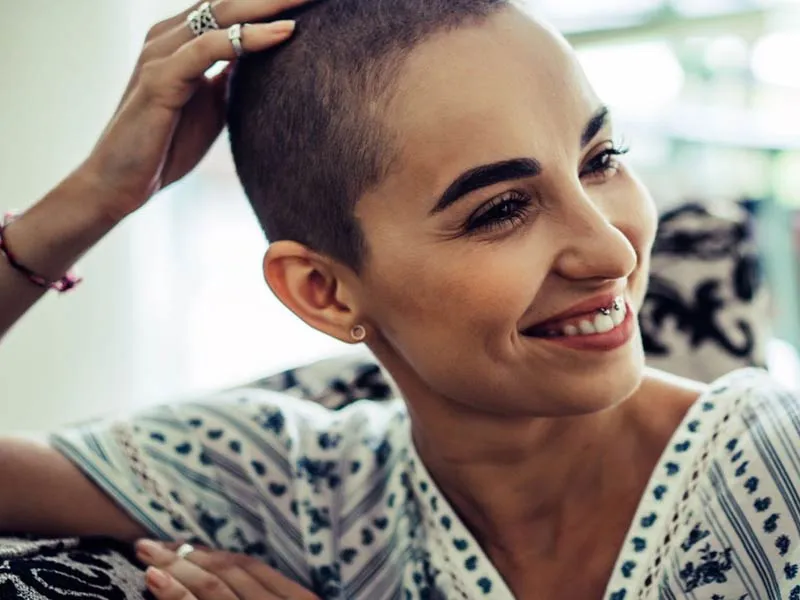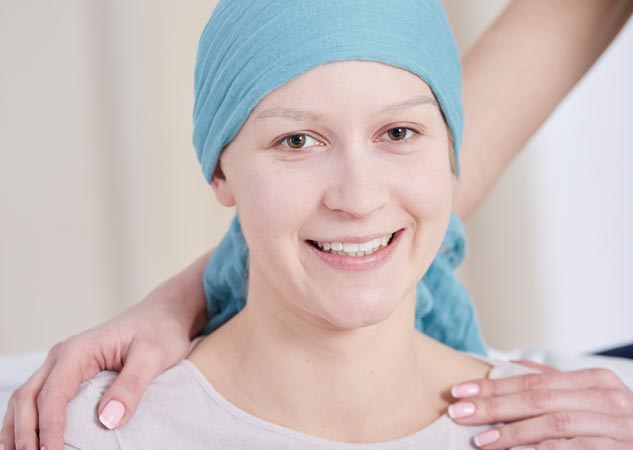
Chemotherapy is a challenging process, and when you come out of treatment, you may be facing a new world, including new developments in your hair. For most, hair loss is a major side effect, and the return of new growth is a welcome, though sometimes fragile, occurrence. This new hair, commonly called ‘chemo curls,’ can be different in texture, colour, and density from your previous hair.
Table of Content:-
While new hair is a beacon of hope, a careful hair care regimen is key to encouraging healthy growth, reducing breakage, and making you feel more confident and at ease. We exclusively spoke to our expert, Dr Sanjeev Gulati, Department of Dermatology, Sharda Hospital - Noida, and he shared with us the perfect way to nurture your post-chemotherapy hair.
“Your scalp and new hair will most likely be more sensitive than they were before. Consider this as a brand-new beginning for your follicles, and handle them with care,” Dr Gulati highlighted. Here are a few suggestions from our expert:
1. Patience is Your Best Friend
Hair regrowth takes time. Avoid the temptation to force it along with aggressive treatments or over-manipulation. Rather, enjoy the ride and celebrate each inch of growth.
2. Talk to Your Doctor or Oncologist
As with any new items or major changes to your regimen, it is always best to speak with your medical provider first. They can provide specific guidance that is tailored to your unique treatment and health.

Also Read: 5 Foods to Boost Your Child’s Immunity in Monsoon
3. Patch Test Everything
Even if you've ever used a product previously, when you had chemotherapy, your skin and scalp may be more sensitive now. Therefore, always patch test on a small hidden area before putting it everywhere.
Ideal Hair Care Routine After Chemotherapy
1. Cleansing
- Select Sulphate-Free & Fragrance-Free Shampoos: Sulphates are harsh and stripping, and fragrances can be irritating on sensitive scalps. Use mild, gentle shampoos specially designed for a sensitive scalp or baby hair. Find products containing aloe vera, chamomile, or oatmeal.
- Lukewarm Water Only: Hot water strips natural oils and is irritating to the scalp. Wash and rinse using lukewarm water.
- Gentle Washing Method: Rather than scrubbing, massage the shampoo into your scalp with your fingertips. Allow the foam to naturally travel down the length of your hair.
- Frequency: At first, you may only wash your hair every few days to prevent dehydrating the scalp. Once your hair gets longer and stronger, you can then tweak the frequency.
2. Conditioning
- Light, Hydrating Conditioners: Opt for a conditioner that is light but richly hydrating. Again, fragrance-free versions are best.
- Ends are Priority: Leave conditioner in the lengths and ends of your hair. If the scalp remains very sensitive, avoid direct contact with the conditioner.
- Rinse Clean: Make sure all conditioner is washed out to avoid build-up, which can weigh down new hair.
3. Always Air Dry
- Say No to Rubbing: Roughly rubbing your hair with a towel breaks hair. Instead, gently blot your hair with a soft microfiber towel to remove excess water.
- Air Dry Whenever Possible: Heat styling can be extremely damaging to fine, new hair. Air drying is safest and most recommended.
- If You Have to Blow-Dry: If you must use a blow dryer, use the lowest setting and speed. Hold the dryer away from your scalp and move it back and forth to keep the heat from being focused in one spot.
Also Read: Can You Be A Lifelong Donor? Understanding The Limits And Duration Of Blood Donation

4. Avoid Styling
- Prevent Heat Styling: This means curling irons, straightening irons, and even hot rollers. The heat may be very damaging to delicate new growth.
- Restrict Chemical Treatments: Perms, relaxers, and hair dyes must be stayed away from until your hair has established itself and is strong, preferably for at least 6-12 months since the last chemotherapy treatment, and always with your physician's permission.
- Gentle Brushing: Brush with a wide-tooth comb or soft-bristle brush. Detangle from the ends and work up slowly. Never pull or tug.
- Loose Hairstyles: Avoid tight ponytails, braids, or buns that can put stress on your scalp and hair follicles. Opt for loose styles that minimise tension.
5. Scalp Care
- Moisturise Your Scalp: If your scalp feels dry or itchy, a light, non-comedogenic moisturiser or natural oil (like jojoba or argan oil) can provide relief. Apply a small amount and gently massage it in.
- Protect from the Sun: Your scalp can be more sensitive to UV radiation. Wear a hat or use a scalp-friendly SPF when outdoors.
- Monitor for Changes: Pay attention to any persistent redness, itching, flaking, or tenderness. Report any concerning changes to your doctor.
Bottomline
Caring for your hair following chemotherapy is an act of self-love and a way to boost your confidence and strength. By taking a gentle, regular, and patient approach, you can encourage your new hair to grow, enabling you to enjoy this thrilling stage of your recovery with confidence and a full head of hair.
Also watch this video
How we keep this article up to date:
We work with experts and keep a close eye on the latest in health and wellness. Whenever there is a new research or helpful information, we update our articles with accurate and useful advice.
Current Version
